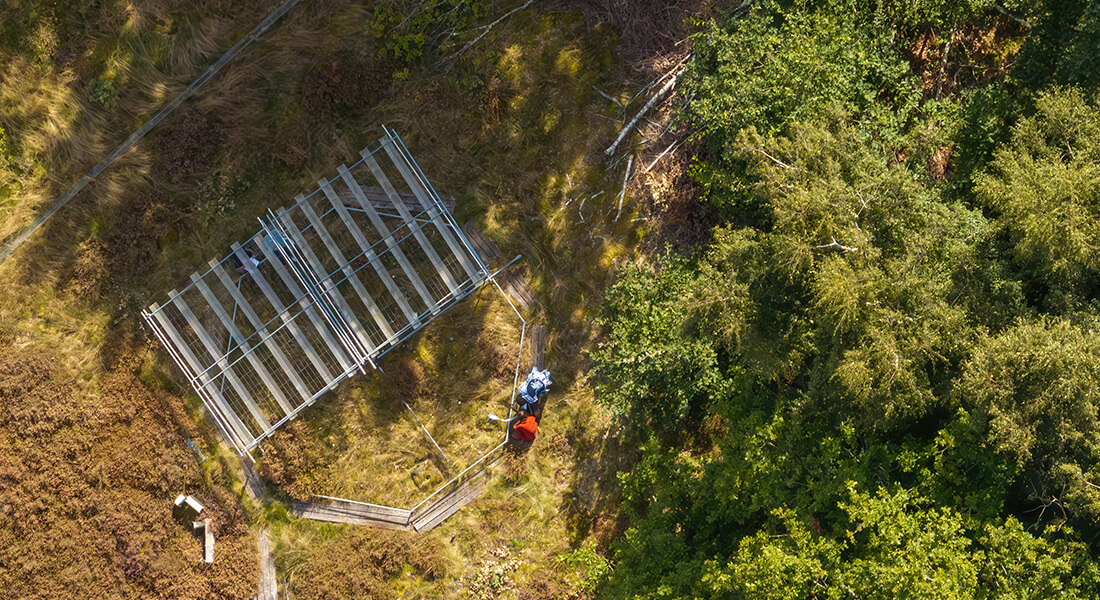Brandbjerg (CLIMAITE)

Photo: Kent Pørksen.
Semi-natural grasslands/heathlands provide important ecosystem services like biodiversity, carbon and nutrient storage/buffering and human recreation. The short vegetation and the co-existence of many different plant and animal species and/or functional types make these ecosystems particularly valuable “model ecosystems”, in which key ecosystem processes, such as species interactions/competition and ecosystem-level biogeochemical cycling may be investigated at detailed spatial and temporal scales.
The Brandbjerg site builds upon the former CLIMAITE experiment (VKR-Centre of Excellence, 2005-2015), where the three major climate change factors CO2, warming and summer drought, were manipulated simultaneously. Since 2016, the new experimental setup provides a response surface across 24 plots (each 7 m2) of three treatment levels of drought (removing up to 66% of ambient precipitation). The greenhouse gas exchange is continuously monitored using ECO2fluX automatic chambers.

The Mols site is a former grassland/heathland experimental research site now available as a satellite site to Brandbjerg. It consisted of nine plots (each 20 m2) subjected to increased temperature or prolonged summer drought with two different retractable curtain types. Treatments were applied between 1999 – 2016 and the facility thus provides a unique, long-term data series for manipulation experiments, enabling studies to evaluate climatic effects on ecosystem functioning and processes at scales from seconds to decades.

Contact
Klaus Steenberg Larsen
PhD, associate professor
DIR (+45) 3533 7654
MOB (+45) 9356 5583
ksl@ign.ku.dk
Movie
What we learned after 8 years of climate manipulations at CLIMAITE
Klaus S Larsen tells about the current experiments at CLIMAITE
CLIMAITE seen from above
